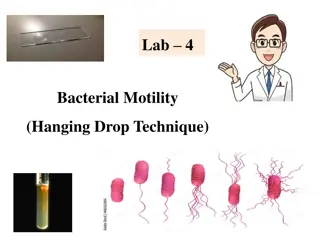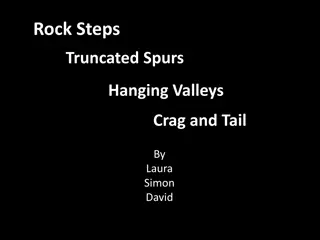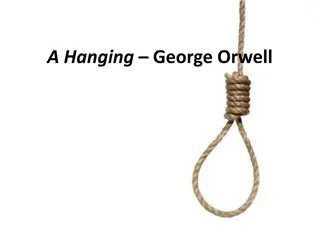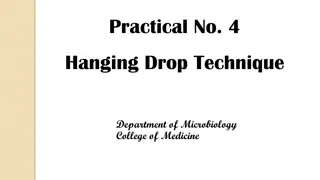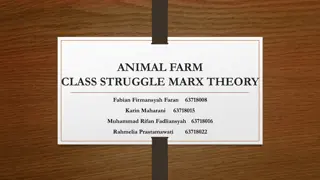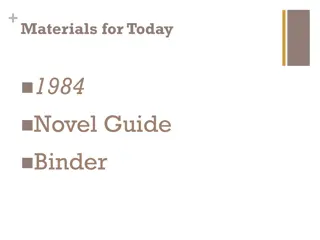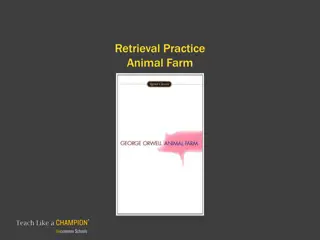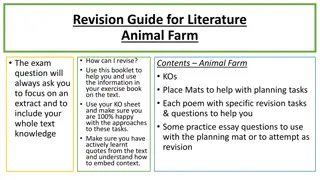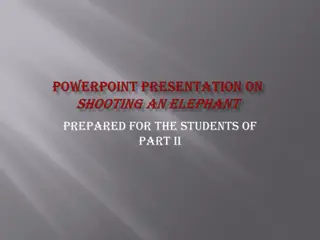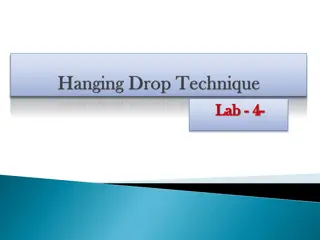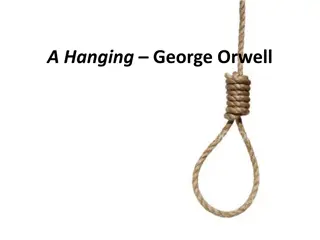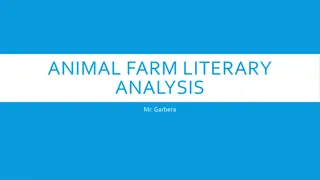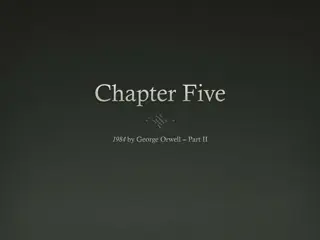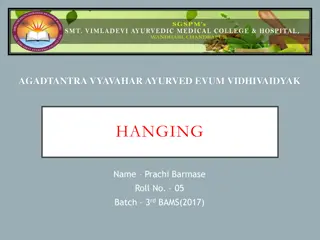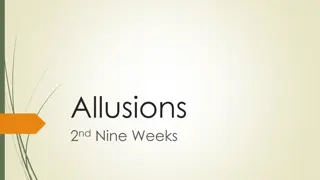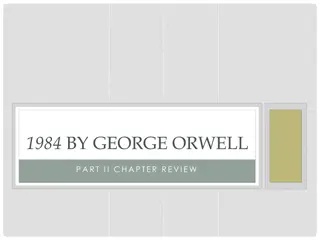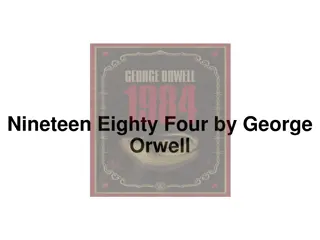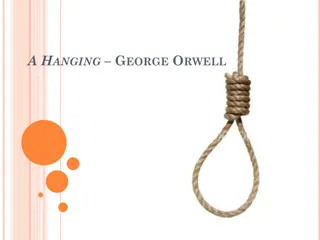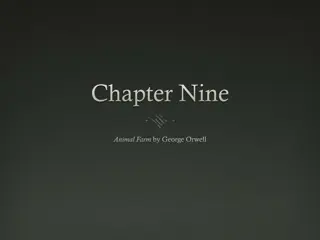A HANGING, BY GEORGE ORWELL
Explore past paper questions on Prose Non-fiction from 2015 and 2016, providing guidance on analyzing non-fiction texts effectively. Understand the importance of structuring essays, selecting appropriate techniques, engaging with social, political, or ethical issues, and influencing reader opinions through examples from George Orwell's "A Hanging."
Download Presentation

Please find below an Image/Link to download the presentation.
The content on the website is provided AS IS for your information and personal use only. It may not be sold, licensed, or shared on other websites without obtaining consent from the author.If you encounter any issues during the download, it is possible that the publisher has removed the file from their server.
You are allowed to download the files provided on this website for personal or commercial use, subject to the condition that they are used lawfully. All files are the property of their respective owners.
The content on the website is provided AS IS for your information and personal use only. It may not be sold, licensed, or shared on other websites without obtaining consent from the author.
E N D
Presentation Transcript
A HANGING, BY GEORGE ORWELL AN APPROACH TO CRITICAL ESSAY WRITING
PAST PAPER QUESTIONS PROSE NON FICTION 2015 Answers to questions on Prose Non-fiction should refer to the text and to such relevant features as ideas, use of evidence, stance, style, selection of material, narrative voice . . . Non-fiction texts can include travel writing, journalism, autobiography, biography, essays . . . 1. Choose a non-fiction text which recreates a moment in time. Discuss how the description effectively recreates this moment and show how important this is to your appreciation of the text as a whole. (2015) 2. Choose a non-fiction text which is structured in a particularly effective way. Explain how the structure enhances the impact of the writer s message. (2015) 3. Choose a non-fiction text which made you consider your views about a social or political or ethical issue. Explain what the issue is and how the writer uses language effectively to engage you. (2015)
PAST PAPER QUESTIONS PROSE NON FICTION 2016 4. Choose a non-fiction text in which the writer engages your interest in a place or culture. Discuss, with reference to appropriate techniques, how the writer successfully engages your interest in this place or culture. 5. Choose a non-fiction text in which the writer describes a traumatic or rewarding experience. Discuss, with reference to appropriate techniques, how the writer conveys the traumatic or rewarding nature of the experience. 6. Choose a non-fiction text in which the writer attempts to influence the reader s opinion on a person or an issue. Discuss, with reference to appropriate techniques, how the writer attempts to influence the reader s opinion on the person or the issue.
WHERE DO I START? 1. Read ALL of the questions from this section 2. Before you decide on a question be sure to understand what exactly it is that you are being asked. Remember: there are TWO parts to the essay question so read beyond the first line. 3. Answer the question 4. Make a brief plan
ENSURE THAT YOU ALREADY HAVE AN ANSWER TO THE QUESTION (albeit a short one) Example: Question 6: Choose a non-fiction text in which the writer attempts to influence the reader s opinion on a person or an issue. Discuss, with reference to appropriate techniques, how the writer attempts to influence the reader s opinion on the person or the issue. Answer: A Hanging by George Orwell aims to influence the reader s opinion on the issue of Capital Punishment. Orwell effectively persuades the reader that Capital Punishment is an abhorrent, unethical practise that should be abolished through his clever and deliberate use of such literary techniques as Setting, Contrast, Symbolism, Imagery and Structure. (you ll need to obviously have a good understanding of HOW these techniques do this before you write your response so study study study!)
BRIEF PARAGRAPH PLAN WHAT MIGHT THIS LOOK LIKE? Ben TBen is busy writing a brief paragraph plan before he begins his essay. Ben doesn t waste time looking over his shoulder wondering where the hell to begin. Ben is not hoping the ground will swallow him up. Not Ben Be like Ben.
TASK 1: ANSWERING THE QUESTION Choose 2 other Past Paper Questions (except for Question 3)and write a brief answer to them in Prose. You have 8 minutes
http://kawaii.kawaii.at/img/strawberry-tart-eraser-from-Japan-by-Iwako-160117-1.jpghttp://kawaii.kawaii.at/img/strawberry-tart-eraser-from-Japan-by-Iwako-160117-1.jpg INTRODUCTION T.A.R.T Title- A Hanging Author-George Orwell Relate to question & give brief synopsis of the text- The story was written during Orwell s time serving in the British Imperial Police in Burma, between 1922 and 1927, during the British occupation of India. Orwell aims to influence the reader s opinion on the issue of Capital Punishment. He effectively persuades the reader that Capital Punishment is an abhorrent, unethical practise that should be abolished. Techniques-summarise the techniques which you will be looking at when answering the task: Setting, Imagery, Symbolism and Tone He does this through his clever and deliberate use of such literary techniques as Setting, Contrast, Symbolism, Imagery and Structure.
Explanation & analysis: identify the literary techniques that have been A good Topic Sentence will: 1. Link to the essay task 2. Introduce the focus of the paragraph SETTING used and analyse and explain these in sufficient depth Make detailed and specific links back to the essay question and REMEMBER the latter part of the essay question: how he attempts to influence the reader s opinion. Here you MUST engage on a deeper/ personal level. Your POINT should be more specific than your T.S and will introduce your evidence. It should also contextualise things for the reader You can make a secondary POINT within your paragraph. Topic sentence: The text begins with the vivid description of the dismal setting, the description of which influences the reader s opinion on Capital punishment. Point: Orwell describes the prison setting where the men are being kept: Evidence: It was in Burma, a sodden morning of the rains. A sickly light, like yellow tinfoil, was slanting over the high walls into the jail yard. Explanation & Analysis: Orwell s use of pathetic fallacy is illustrative of the dreary and bleak setting of the prison. Furthermore, by personifying the lack of natural light as being sickly subtly alludes to idea that the prison itself is unsanitary and riddled with dirt and disease. Point 2: Orwell then continues by creating a vivid impression of the living conditions that the prisoners must endure prior to their hanging. They are kept in: Evidence: a row of sheds fronted with double bars, like small animal cages. Explanation & Analysis: The imagery used to describe each cell works to dehumanise the prisoners by giving the impression that they are confined to cramped cages deemed unfit for humans, thus evoking sympathy in the reader. Relate to Question: Orwell s description of the setting reflect the condemnation which he has for Capital Punishment as a social issue as it is evident that Orwell is somewhat disgusted by the dirty, cramped squalor which the men are condemned to live in and it is through this description that he attempts to influence the reader to share the view that Capital Punishment is an abhorrent practise. Furthermore, we can assume that Orwell deliberately withholds details of the crimes which some of the prisoners are being held for in order to allow the reader to focus on the indignation of objecting any human being to live in such terrible conditions.
NEXT STEPS ENSURING YOUR ESSAY FLOWS Your essay should have a natural flow to it. In order to achieve this it is best to NOT jump around from one part of the text to another. Write your essay CHRONOLOGICALLY. Use TIME CONNECTIVES in your Topic Sentences to ensure the marker can enjoy a smooth journey from beginning to end
TIME CONNECTIVES & TOPIC SENTENCES- EXAMPLES The text begins with the vivid description of the dismal setting, the description of which influences the reader s opinion on Capital Punishment. Orwell goes on to create a revealing contrast between the prisoners and the guards which helps to illustrate his condemnation of the death penalty As the essay progresses Orwell uses powerful symbolism which further convinces the reader to share his aversion to Capital Punishment On his way to the gallows Orwell describes the moment the condemned prisoners avoids a puddle, which acts as a powerful image in the essay for the abolition of Capital Punishment Towards the end of the text, once the hanging of the prisoner is over, the reaction of the guards creates a solemn atmosphere forcing the reader to contemplate the wrongfulness of the hanging which has just taken place.
PARAGRAPH 2 Orwell goes on to create a revealing contrast between the prisoners and the guards. - Point: Make an introductory point - Evidence: He was a Hindu, a puny wisp of a man, with a shaven head and vague liquid eyes. Six tall Indian warders fat Dravidian in a white drill suit Two of them stood by with rifles and fixed bayonets, while the others handcuffed him - Explanation & Analysis: Zoom in and Zoom out! Example - Relate to Essay Question
Orwell goes on to create a revealing contrast between the prisoners and the guards which helps to illustrate his condemnation of the death penalty. As well as being subjected to the brutality of the prison cells, the prisoners also appear to be completely emancipated. Orwell describes one prisoner as a: puny wisp of a man, with a shaven head and vague liquid eyes. The prisoner s puny appearance conveys images of malnourishment, frailty and vulnerability which contrasts directly with the fat Dravidian guard in the white drilling suit . Furthermore, Orwell describes two of the guards as being: stood by with rifles and fixed bayonets, while the others handcuffed him Considering the fragility of the prisoner the guards seem to take unnecessary measures in order detain the man; this is often regarded as an allegory for Orwell s criticism of Imperial rule in India at this time. What s more, by describing the prisoners vague liquid eyes Orwell has attempted to humanise him (which contrasts with the animalistic conditions in which the prisoners are kept ) in order for us to question to legitimacy and morality of the hanging about to take place. Therefore Orwell s use of contrast is an effective literary device which helps to convince the reader that the death penalty is nothing but an inhumane display of strength and power.
MOVING ON TO YOUR NEXT MAIN BODY PARAGRAPH SMOOTHLY Remember, a Topic Sentence should both link to the essay question and also establish the focus of the paragraph. Example: As the essay continues (time connective) Orwell uses powerful Symbolism(establishes the focus of the paragraph) in order to continue to influence the reader (links to the question) to share his aversion for Capital Punishment. Continue by making a specific POINT(put into context) i.e As the guards are escorting a prisoner to the gallows they are made to feel uncomfortable by the surprise appearance of a stray dog. FINISH THIS PARAGRAPH


